Diseño de sesiones móviles: búsqueda de ofertas
Continuando con mi última publicación , me gustaría profundizar en cómo impulsar la reactivación en dispositivos móviles.
Impulsar la retención a largo plazo sigue siendo el objetivo de los desarrolladores de juegos móviles gratuitos. A medida que los costos de marketing para el lanzamiento de títulos continúan alcanzando nuevos máximos, se vuelve cada vez más importante retener a los jugadores a largo plazo.
La primera estrategia para lograr que los jugadores regresen durante mucho tiempo es diseñar las características del juego para que los jugadores se comprometan a regresar. Los jugadores activan temporizadores para activar una notificación en unas pocas horas. Los jugadores también pueden presionar a otro amigo para que juegue una ronda y luego recibir una notificación cuando sea su turno de jugar nuevamente. Estos evocan un diseño de sesión muy “explícito”. Hay notificaciones automáticas que siempre te avisan cuando necesitas volver al juego. Razones muy obvias para volver al juego.
Pero esto es agotador y puede conducir a diseños de sesiones muy estructurados que no se adaptan a la vida del jugador. También se vuelve muy agotador, muy rápido. Los jugadores reciben notificaciones en medio de la noche y sienten que para poder jugar de manera óptima necesitan regresar.
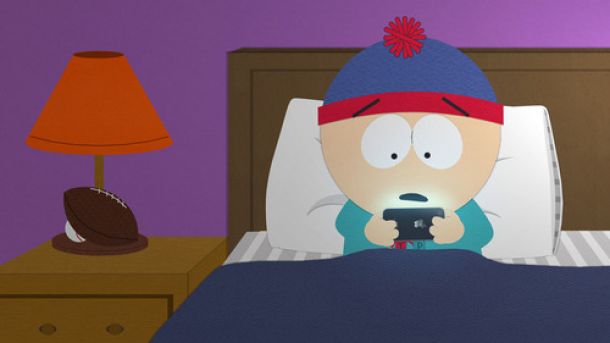
South Park describió este comportamiento perfectamente en el episodio reciente burlándose de los juegos gratuitos. Despertarse en medio de la noche para cuidar los cultivos envejece muy rápido.
Como resultado, las notificaciones push explícitas están bien para activar de 1 a 3 sesiones por día. Sin embargo, más allá de esto, el juego se convierte en un Tamagotchi molesto y los jugadores se alejarán de tu juego.
Pero, francamente, 1-3 sesiones por día no son suficientes para jugar gratis. Al analizar algunos datos de la industria de Digi-Capital, podemos ver la importancia de las sesiones por día y su correlación con alcanzar los mayores ingresos:
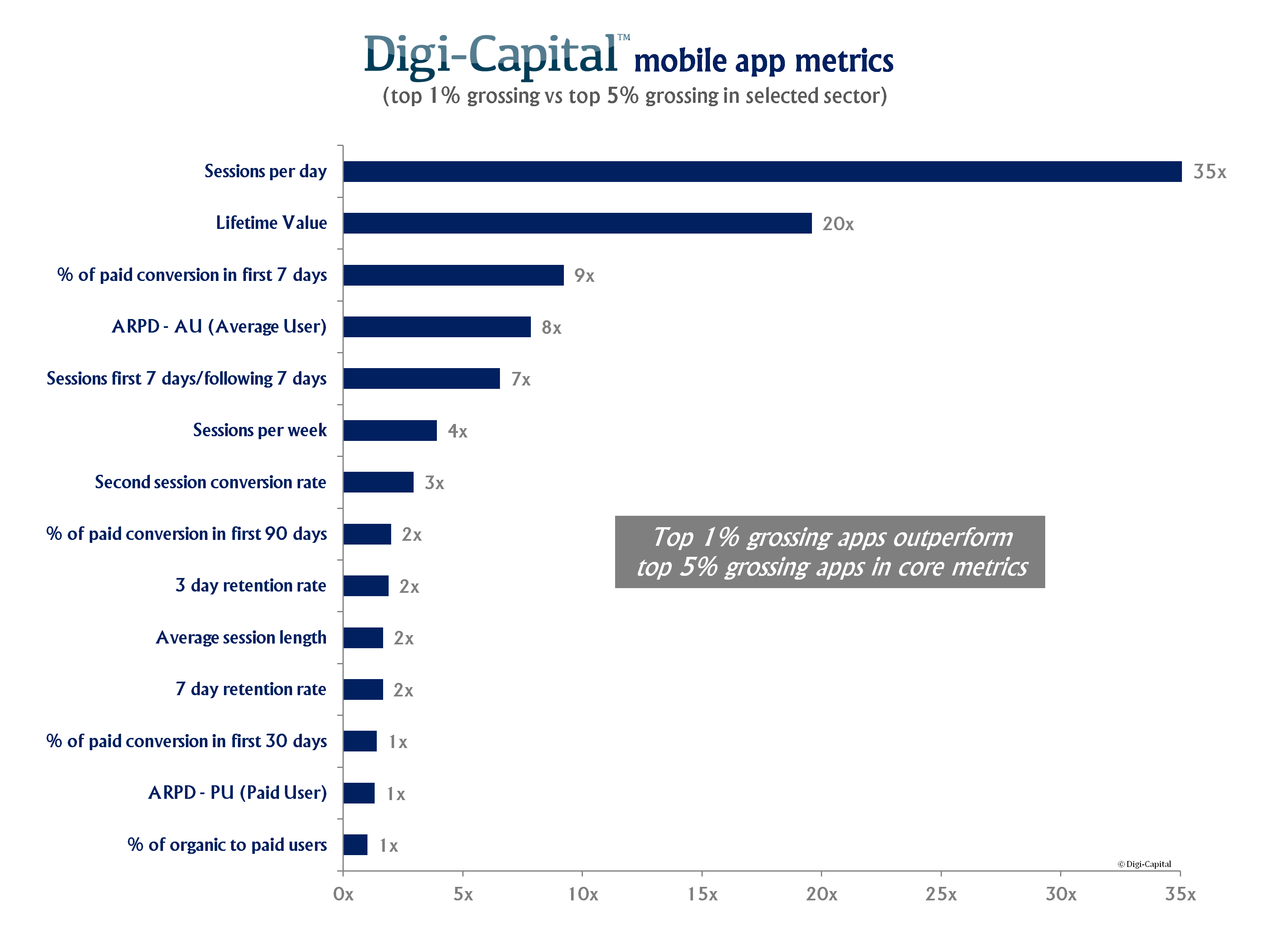
http://venturebeat.com/2014/08/27/5-drivers-of-700-billion-in-mobile-internet-revenue/
Alcanzar un buen número de sesiones por día es un muy buen indicador de un juego con grandes ganancias. Entonces, ¿cómo diseñamos un juego que haga retroceder al jugador muy a menudo?
Aprenda de los Maestros: Facebook y Twitter
Facebook y Twitter son los claros ganadores en dispositivos móviles en sesiones por día.
¿Pero por qué? ¿Qué nos hace retroceder?
Hay mensajes directos y notificaciones: la gente publica sobre nosotros o nos envía mensajes. Esto proporciona las notificaciones "explícitas". Los jugadores regresan porque están comprometidos socialmente a responder estos mensajes y mirar sus notificaciones.
Pero ¿por qué abrimos Facebook cada vez que hacemos cola en el supermercado? ¿Incluso cuando no hay notificaciones en el teléfono? ¿Por qué retomamos Twitter cada vez que tenemos una pausa aburrida en una conversación?
Por las noticias.Porque siempre hay algo que comprobar, siempre la esperanza de que esté sucediendo algo nuevo.
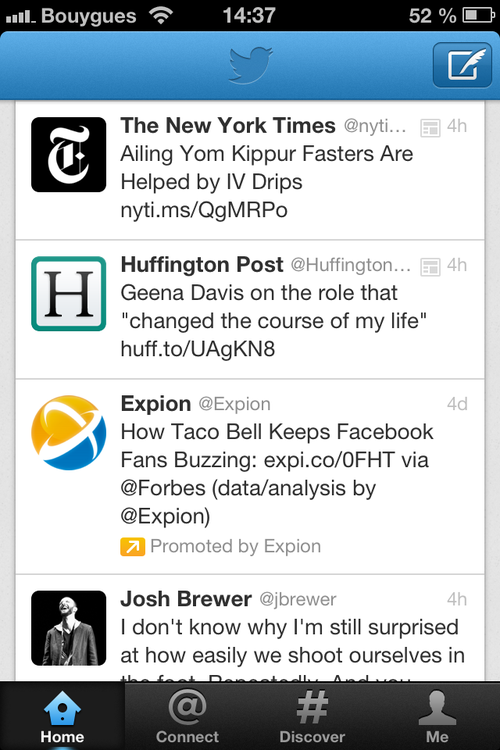
Why do you open up Twitter every 15 minutes? Because there’s always something new on the feed. There’s always an anticipation that you could find out something new if you just checked in quickly…
Throughout the day the content on both of these networks is changing rapidly. A user can come back once a day, five times a day or a hundred times a day and still get enjoyment. This is what mobile free to play needs to strive for.
Going Deal Hunting
Alright, so game design can’t provide the same amount of new content and surprises that a social network can.But that doesn’t mean that we can’t hit the same level.
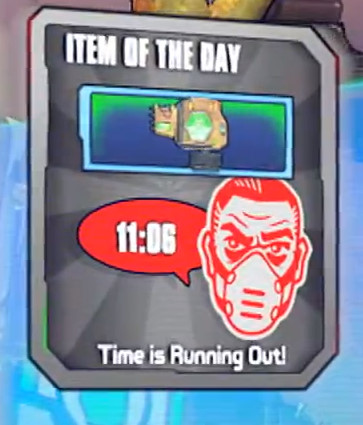
I came back to the shops often in borderlands to see what the deal was.
A first great example of creating this session design feeling is cycling content in shops.
For shops, you don’t have all the items available at all times. Some of the best moments using the store in Borderlands or Diablo was when the store had the exact item that I wanted on sale or for a deal. If your design supports a huge possible library of items to sell, then a cycling shop is a must. Highly engaged players feel great finding deals on items that were previously too high. Players always have hope coming into the game that there might be the solution to their problems available in the shop for a deal. In short: the shop provides a feeling of something new and interesting that could change their fortunes. If the cycle is short enough, and the deals good enough, this can really push players to come backthroughout the day. It also adds urgency to purchasing behaviour — each deal feels like a once in a lifetime opportunity.
Of course we’ve seen this behaviour in other forms as well. Ebay, Craigslist, and Steam Sales are great inspiration for creating a store that really pushes players to come back constantly to go deal shopping.
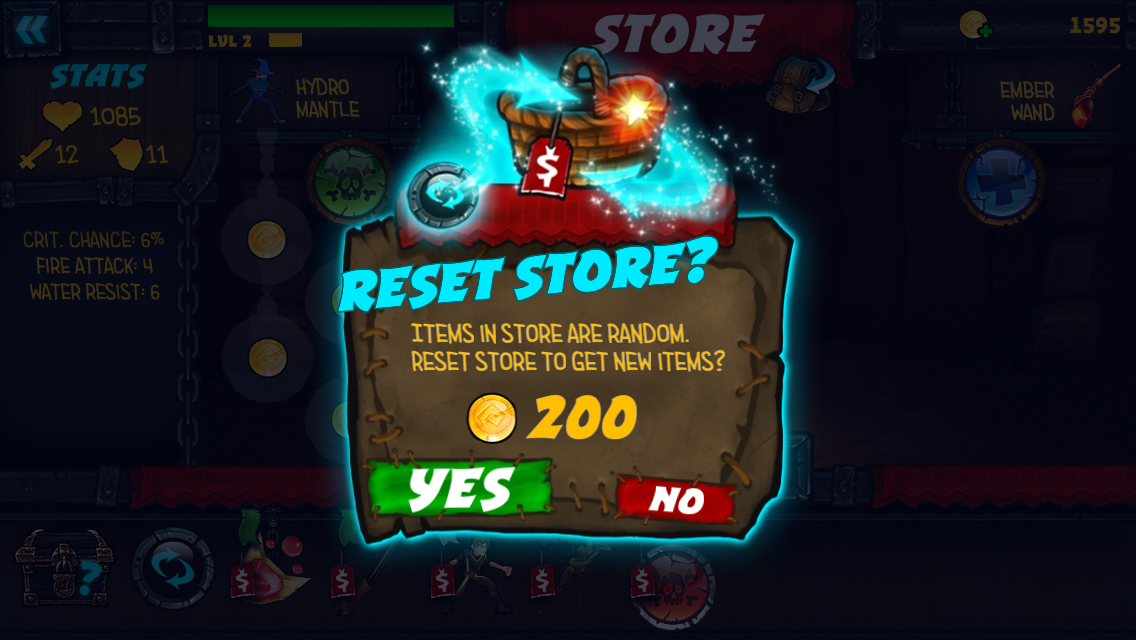
Also, this cycling can create some other interesting monetization mechanics. You don’t want to come back throughout the day? You really want to find that item quickly? Then pay some currency to refresh the store. You can see this in the recent Backflip game, “SpellFall”.
Shopping forLevel Design
Of course this constant cycling isn’t limited to just in-game shops. This same mentality can be applied to your progression system or matchmaking system.
Let’s take for example a game like Boom Beach. What would happen if you only have 10 opponents you could play per hour. Every hour, the full list is refreshed. Players then would shop the deals on this board. This hour, which of these opponents are the easiest to beat and provide the best reward? Then each hour they return and search for the “deals” on this board which will help them progress. This could be a great replacement for the current system where players feel like they are matched with extremely difficult opponents and can only progress by grinding the PvE computer levels, greatly reducing the importance of PvP in the game.
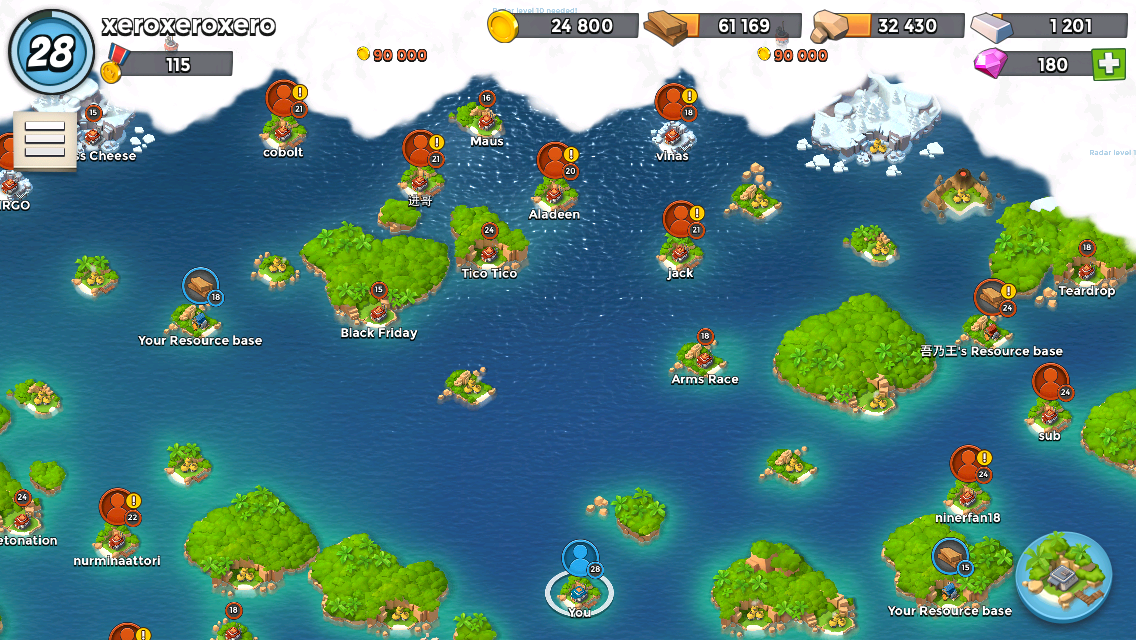
Everyone on the map is too difficult to face. There never are any deals here.
Tener niveles que alternan y cambian a lo largo del día es una forma de agregar opciones interesantes a un juego PvE o basado en niveles. Puzzle and Dragons tiene mazmorras de eventos por tiempo muy limitado. Hacer que estos sean más centrales para la rutina y la progresión diaria es una excelente manera de agregar opciones más interesantes y hacer que el jugador regrese con más frecuencia.
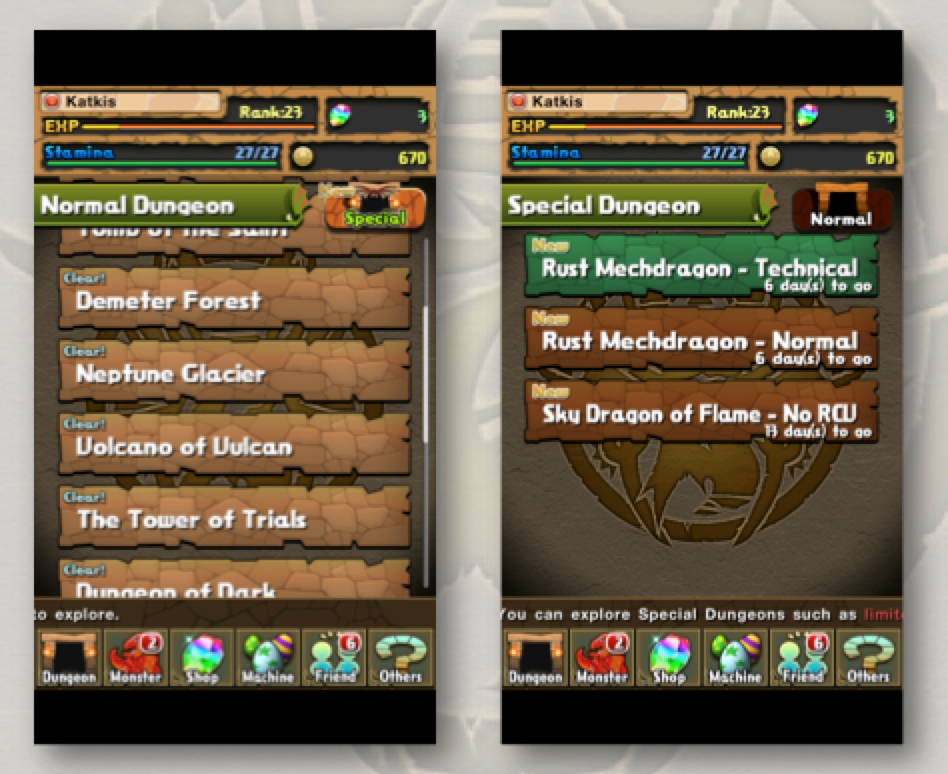
Para los juegos basados en comercio y recursos, tener clientes que tienen requisitos aleatorios y otorgan recompensas aleatorias a lo largo del día es una manera fácil de agregar emoción.
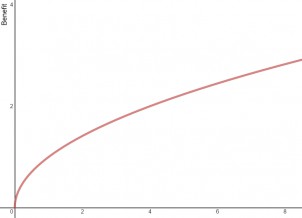
¿Qué pasaría si todos estos clientes estuvieran basados en el tiempo?
Lo más probable es que Hay Day no haya añadido esto porque hace que establecer objetivos a largo plazo sea muy difícil para los jugadores. Los jugadores no pueden predecir si hacer pan para la próxima hora o leche es la elección correcta. Entonces, por supuesto, esto debe equilibrarse con garantizar que el jugador siempre tenga claro el trato que busca, pero que pueda encontrar tratos interesantes en el camino para acelerar su progreso.
Su objetivo como diseñador al final del día es lograr que los jugadores regresen para varias sesiones por día. Permita que los jugadores se sientan inteligentes al aprovechar las ofertas únicas que los hacen progresar más rápido. Esto hará que tu juego se sienta mucho más vivo: cambia constantemente y un jugador no puede predecir cuál será el camino óptimo para completar el juego. La progresión no será lineal ni aburrida. La frecuencia con la que necesitas trabajar, cuántas rondas debes completar antes de poder vencer al próximo jefe no se muestra frente a ti.
Lo más importante es que siempre tendrás una razón para volver al juego.
Leave a Reply